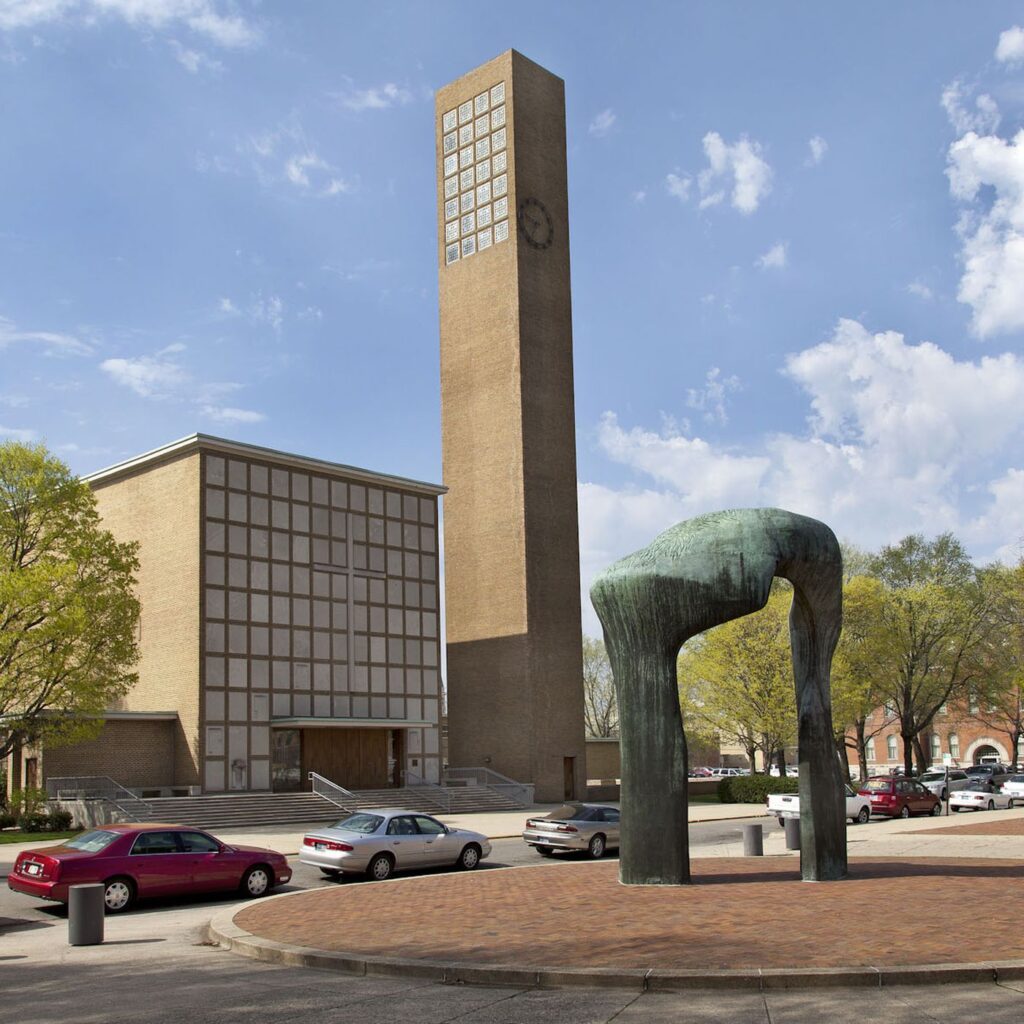The First Christian Church was completed in 1942 with help from his soon Eero. This church is regarded as one of the first churches of contemporary architecture in all of the United States. It occupied a city block with a two-story classroom wing and a sunken garden containing a reflecting pool. The church was not symmetrical as Eliel and Eero believed thhat the church should be asymmetrical in nature.
Elieel Saarinen – Helsinki Central Railway Station
The Helsinki Central railway station is located in central Helsinki, Finland. The railway station has a clock tower and two pairs of statues holding lamps at the entrance. The station was built as part of a contest and Eliel Saarinen won the contest out of 21 entries. The tower is a great entryway to Helsinki and has eye popping colors with the teal colors on the roofs.

Eliel Saarinen – Crow Island School

While this is not a building you can access everyday, this school is still a unique take on a school’s design. We find that this school has protruding classrooms that allow them to have more than the traditional single window. It works in a sense that it gave more life for the students in the classrooms. When you look at pictures of the school, you’ll see that it goes away from the traditional school design.

Eliel and, his son, Eero worked with Perkins, Wheeler, and Will to make the school come to life. It is a wonderful design that I hope to see more schools implement in future designs.
Eliel Saarinen – Kleinhans Music Hall

The building is meant to commemorate the public spirit, vision, and generosity of Edward L. and Mary S. Kleinhans, who devoted their entire estates to the building of this center. Eliel Saarinen designed this with the help of his son Eero and utilized an International style. The music hall was built between 1938-1940, with the design of the building resembles the shape of a violin or cello through its predominant lines both outside and inside the music hall. They are observed as smoothly curvilinear and sweeping, meaning to shape the motion and flow of music itself.
The concert hall gained recognition with its acoustical excellence and became a place of pilgrimage for architects and acoustical engineers all over the world. You can see many concert halls showing this influence.
Como War memorial

In Como Italy, on the bank of Como Lake, the Como War Memorial was built. The memorial symbolizes the Italian lives lost during World War I. Terragni was asked by the fascist leaders to design a structure worthy of those who died. The memorial is 33 meters high and is constructed of granite. Inside the memorial, there are 650 names carved into the granite representing some of the lives which were lost.
Novocomum
The Novocomum is in Como Italy and was built in 1929. This building is a 5 story tall apartment building. When designing this building Terragni needed to obtain a permit to build. He knew the council would not approve of his plans so he presented false design documents and was granted the permit. Once the construction was completed, the council realized that this was not the building they agreed upon. After a long fight, the building was allowed to remain as it still stands today.
Asilo Sant’Elia

Asilo Sant’elia is in Como Italy and was built in 1937. This building is a single-story building and was used as a school, as it still is today. Children went to school here during the fascist rule of Italy. This building was designed to fit on the corner of an intersection and to blend in with the surrounding houses while creating a safe place for children.
Casa Rustici

The Casa Rustici was designed by Giuseppe Terragni in Milan Italy. It is a multi-level residential building built between 1933 and1935. This building looked much like 2 separate buildings connected by open balcony walkways. In the middle of the building was a courtyard for the residents to experience the outdoors in the middle of Milan. This type of architecture was never seen before and created a new aspect of Italian rationalism.
frank lloyd wright – bachman-wilson house
This one I actually got to see in person last week when I visited the Crystal Bridges Museum in Bentonville, Arkansas. It was built in New Jersey in 1954, but recent flooding issues threatened the house. The owners put it on sale to be moved to a better location; it was sent across the country to Arkansas. The house has enormous windows looking in to the very warm living room. The front is somewhat plain, because Wright did not intend for the front of the house to be the spectacle, he wanted the house itself to be the art.
frank lloyd wright – annunciation greek orthodox church

The Annunciation Greek Orthodox Church in Wauwatosa, Wisconsin was designed by Wright, but built after his death in 1961. The building observes the heavy tradition of domes in the Greek Orthodox faith, the building itself is one. It was inspired by the Haga Sofia in Istanbul. Wright described it saying: “The edifice is in itself a complete work of modern art and science belonging to today but dedicated to ancient tradition—contributing to Tradition instead of living upon it.”
